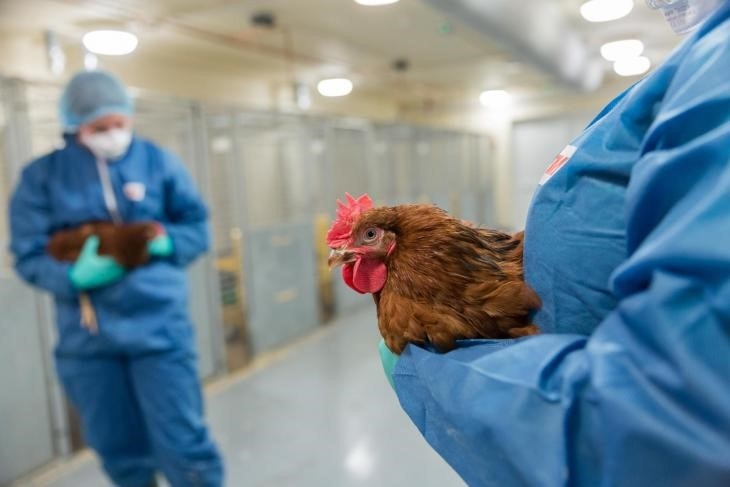New lab technique reduces need for experimental chickens
Procedure allows researchers to isolate immune cells infected by IBDV and grow them under laboratory conditions.
October 8, 2018

Scientists from The Pirbright Institute in the U.K. have created a laboratory procedure that allows the response of chicken immune cells to infectious bursal disease virus (IBDV) to be studied without infecting live chickens.
IBDV, also known as Gumboro disease, can result in immunosuppression and death in poultry and causes significant economic losses across the globe, the institute said.
The new method enables scientists to isolate the immune cells that are infected by IBDV (called B cells) and grow them in the lab. This allows the interaction between B cells and the virus to be investigated, which will help researchers understand the disease and aid in the development of better control strategies, according to the announcement.
The researchers published their protocol in JoVE, a journal that specializes in documenting research procedures through video in order to make experiments easier to duplicate. “We hope that our procedure can be used and adapted by many other scientists who work with chicken B cells so that, as a community, we can reduce the number of birds needed for our experiments,” said Dr. Andrew Broadbent, institute fellow who heads the Birnaviruses group at Pirbright.
Studying how IBDV interacts with the cells it infects was previously difficult to achieve in the laboratory because B cells would not survive when removed from chickens, the researchers said. The procedures demonstrated in JoVE provide an alternative way of studying cell/virus interactions, which could reduce the number of chickens needed for this type of research by 5,000 each year if the method were to be adopted across the board, Pirbright said.
Building on this work, Broadbent has received funding from the National Center for the 3Rs to further study IBDV pathogenesis and improve the control of different immunosuppressive viruses in poultry. “Our research opens up the possibility of studying other viral interactions, such as understanding why some IBDV strains are more virulent, the reaction of B cells to infection with multiple viruses and testing the ability of vaccines to produce immune responses,” Broadbent added.
The new procedure could also be used for investigating other poultry viral disease that infect B cells — such as avian leukosis virus or reticuloendotheliosis virus — and could be applied to different hosts such as ducks or turkeys, further reducing the number of birds needed for this kind of research, the institute said. The technique marks a huge step forward for Pirbright scientists working towards the "refinement, reduction, replacement" of animals in research, known as the 3Rs.
You May Also Like



